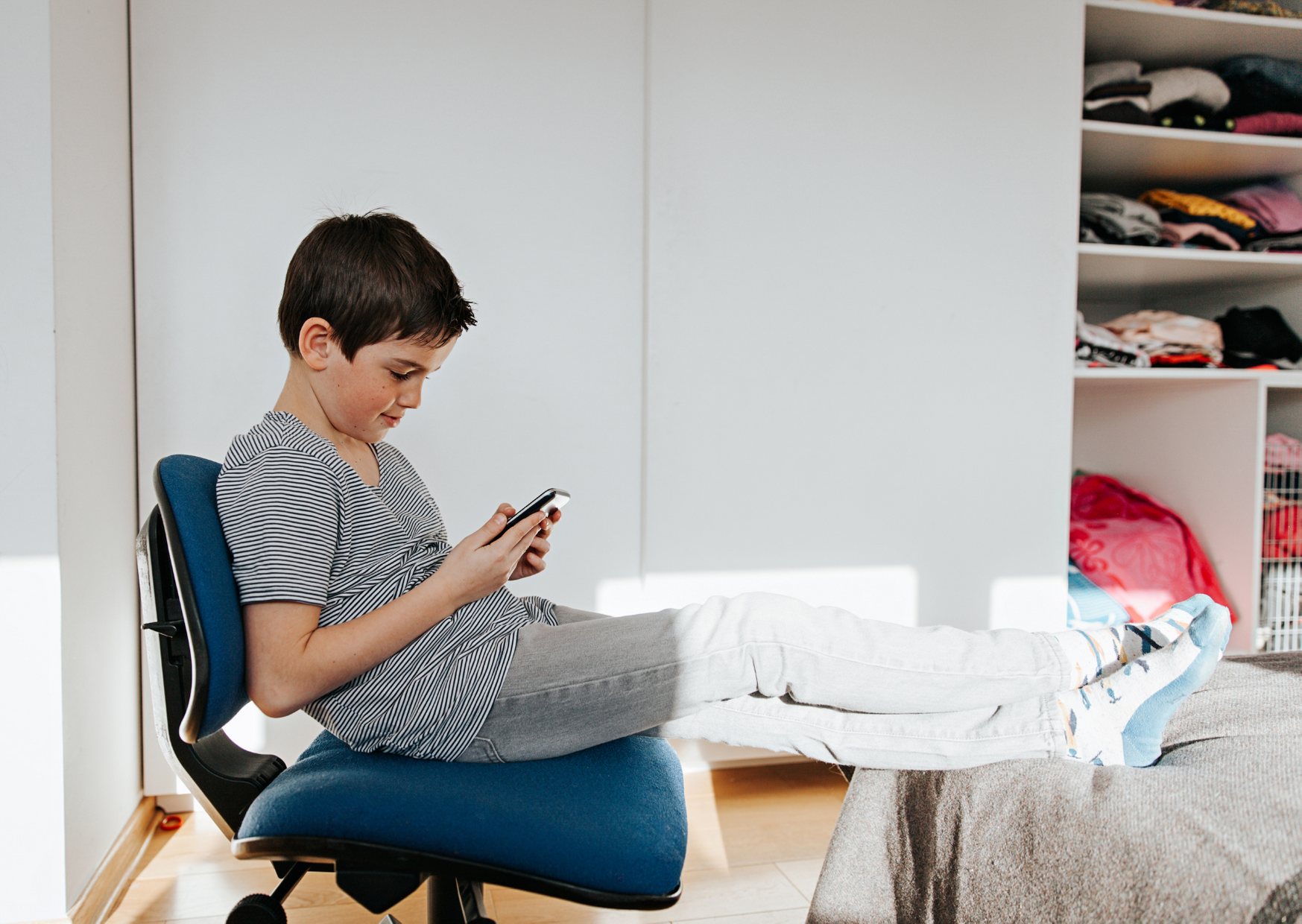
The prevalence of media devices in society means that screen addiction is at an all time high. On-demand television, iPads, kindles, gaming, smartphones, and smartwatches. There’s no escape from them. Screens seem to be everywhere you look, are available on tap and have become integral in both the home, workplace and as a means of socialising. So, it’s no wonder that children are increasingly becoming addicted too.
How Do Screens Affect Kids?
All parents will tell you that watching screens does something to their kid’s brains. It can manifest in many ways including bad behaviour, meltdowns, angry out-bursts, poor sleep, not wanting to stop, reclusiveness, attention-deficit, and poor self-esteem. The list goes on.
It’s also been found that excessive screen-time can inhibit a child’s ability to observe and experience everyday activities, from which they learn and develop. In short, they stop paying attention to the world and interacting with it. Speech and development can be hugely impacted as a result.
Sleep can also be affected because the blue light from screens inhibits melatonin, which can delay sleep. It’s a good idea to turn screens off at least 2 hours before bedtime so that there’s enough time to calm busy minds. Another great way to support this transition from screens and help children sleep more easily is with the mini pocket sized Scentered Sleep Well Aromatherapy Balm.
It’s the ideal sleep aid, quieting the mind and promoting a better, deeper quality of sleep. Our sophisticated floral lavender blend harnesses the therapeutic benefits of Lavender, Chamomile, Palmarosa and Ho Wood, and balances them with Bois de Rose and Geranium. The Patchouli, Clove and Ylang Ylang heart brings a modern oriental twist. It’s perfect to have on your kid’s bedside table, simply get them to rub the balm onto their pulse points and inhale deeply three times before they settle into bed.

How To Prevent Screen Addiction in Kids
The lockdown was a turning point for many parents. All normal rules flew out the window. And with a long hard winter of restrictions with nowhere to go, many resorted to screens to keep the kids entertained. It’s proving a challenging habit to break.
But let’s go right back to basics. The issue of screens fundamentally begins with parents and the way we interact with them. A big part of the problem is that many parents are addicted to screens, and children learn from us. As role-models, we must take a long hard look at ourselves and break some of our own screen habits. Put down the phone when the kids are home, delete the Facebook app and leave the phone and television out of the bedroom. These are just a few of the changes we can make for the better.
The amount and type of screen time allowed will obviously depend on the age of the child. Screens are a massive part of life today so there’s a fine balance to be struck. After all, we do need to equip children with the skills, discipline and boundaries that are necessary to use screens sensibly.
For the ages of 2-5, ideally no more than one hour of screen-time should be allowed and it’s a good idea to co-view with them, so it becomes a shared experience. Ask questions and talk about what you’re seeing. That way, it becomes more educational and they’re still using their observing and learning skills.
As they get a little older, it’s necessary to place consistent limits on screen-time. Children need to know boundaries, so having a rule in place like no more than 2 hours a day, or tv gets switched off at dinnertime, or screens are only available after they’ve done homework, can be helpful and avoid arguments. The key thing is to be consistent. If the rules change each day, boundaries get stretched, which causes confusion and that’s when problems begin. Screens should be seen as a privilege and not something that’s done all the time, or that’s always accessible.
It’s also important to make sure that screens are not taking the place of things like sleep or exercise. Sometimes as parents, we allow these things for an easy life, but the responsibility is on us. It’s a very good idea to designate media-free times, like dinnertime and bedtime and media-free spaces, especially bedrooms, where it’s impossible to see what is being viewed or keep an eye on time. As they get older, we also need to talk to and educate our children about screens, maintaining personal safety when we’re using them and what’s appropriate to look at and what isn’t.
We also need to take the responsibility to turn the television off when it’s been on too long or when it’s time for the kids to have a play or go out in the garden. And yes, it may mean that we do have to interact more with our own kids.
Screens are here to stay so we need to make our peace and learn to live with them. The onus is on us to set a good example to our kids so they learn good screen habits and maintain clear, consistent, and sensible boundaries around screen-time which will help guide them now and in future.
We would love to hear about your mental wellness journey. You can also keep in touch via our Instagram @iamscentered or sign up to our newsletter for updates, news and offers.
